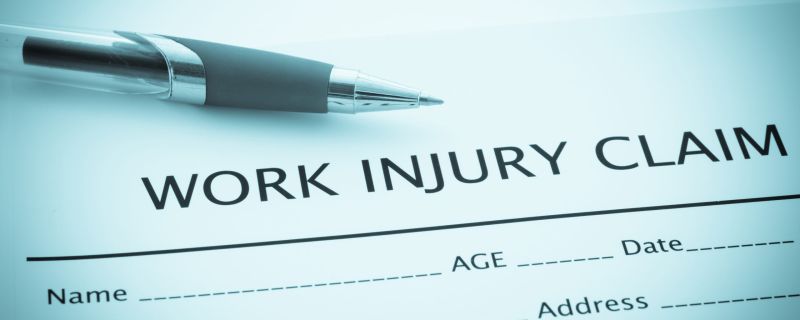
- Claims & Risk Management
- No comments
The moment an injury occurs, it initiates a sequence of events that can last for weeks or even months. But no matter how prolonged the recovery period, the first 24 hours after an injury are the most crucial. To respond effectively to an incident, the majority of the action items should occur within 24 hours.
Your supervisors may already be experienced in handling injuries. Still, a clearly defined 24-hour injury response plan will help them provide even more effective and consistent responses, and ensure that supervisors and employees know what to expect when someone is injured. The plan will also provide the necessary guidance when experienced supervisors are not immediately available to respond to an accident or injury.
The First 24 Hours after an Injury are Critical
Injured employees may feel worried about keeping their jobs, worried about their health and frustrated or confused by company policies. A rapid response plan turns a potentially negative event into a more manageable scenario for you and the employee by addressing their concerns up front, helping them get the care they need and lowering claims costs.
Both organizations that work with injured employees— such as the American Academy of Orthopedic Surgeons—and those that work with risk management for organizations—such as the Public Entity Risk Institute—agree that prompt and thorough action promotes the best outcomes for everyone involved. The lag between when an injury occurs and the reporting of that injury has a significant effect on both the time it takes to close the claim and the final cost of the claim.
A study published by the Hartford Financial Services Group found the following:
- Claims reported during the second week after an occurrence had an average settlement value that was 18 percent higher than that for claims reported during the first week.
- Waiting until the third or fourth week resulted in claims costs that were about 30 percent higher.
- Claims that were not reported until 1 month after the occurrence were typically 45 percent higher.
- According to the study, back injuries were particularly sensitive to delayed reporting; waiting just one week to report a back injury typically results in a 40 percent increase in the ultimate cost of the claim.
Common Reasons for Delaying Injury Reporting
The most common reason for delayed reporting is that the injured party believes the pain will go away. This creates problems, as most injuries that are not addressed immediately take longer to heal. The second most common reason for delayed reporting is a lack of employee training. Approximately 97 percent of employees injured on the job do not know what process to follow; in many cases, they will go to their own doctor rather than reporting to their supervisor.
Less common, but certainly prevalent, is the concern that there will be a negative reaction from a supervisor. This highlights the importance of supervisor training, creating a clear message about immediate reporting, and maintaining a supportive work environment.
Delayed reporting may also be caused by a conflict over a non-injury issue. This occasionally can result in an employee belatedly reporting a real or fabricated injury in order to retaliate for some other grievance against the company or supervisor. Unfortunately, claims of this nature are rarely resolved quickly.
Training and Communication
Since time is so valuable to the process, it is important that training is given in advance so employees will not be confused about their responsibilities should an injury occur. For supervisors, training allows them to take a more active role in managing the response and to serve as a guide for injured employees. This means quicker reporting times and better health outcomes.
Training should ensure employees are aware of how to access appropriate care. Employees should be comfortable reporting injuries knowing they will be treated with care and respect. During training, continually reinforce the company’s commitment to helping every injured employee heal properly and return to work promptly.
To aid in educating your staff about workplace injuries, your company should create and post a written, 24-hour response plan for employees and supervisors to follow.
Prompt Medical Treatment
Immediate assessing of the injury and facilitating appropriate and personal treatment is crucial. Determine the type and severity of the injury; ideally, a staff member trained in first aid can assess the severity of the injury and the appropriate action needed. For injuries that usually result in the most lost time and highest claims costs, such as sprains, strains, neck and back injuries, appropriate medical care is most likely a prompt visit to a clinic or a doctor well versed in evidence-based, occupational health care delivery. An established clinic relationship facilitates prompt and appropriate treatment for injured workers.
Timely Reporting
After triaging the victim and providing prompt medical attention, it’s important that the injury gets reported to the appropriate parties immediately. Ensure that injury reporting is quick across all levels (supervisor, injury management coordinator and insurance carriers). Timely reporting is one important result of effective training and results in rapid return to work and minimized indemnity claims.
Expedited Return to Work
From the moment an injury is first examined, there should be considerations made as to when the employee will be able to return to his or her duties. Return to Work programs tend to result in better health outcomes and preserve many important benefits, such as health coverage, that are contingent on attendance. Return to Work programs also tend to limit claims costs to medical costs only. Whenever possible, employers should facilitate a return to work in order to minimize indemnity payments, because even small indemnity payments can have an adverse effect on your mod. To facilitate your Return to Work program, you should do the following:
- Communicate caring and concern as soon as possible, letting injured employees know that you care about their well-being and want them back on the job as soon as they are able.
- Give the injured employee forms to take to the doctor. These forms allow the doctor to authorize return to work and note any temporary restrictions an employee may have.
- Follow up with the injured employee by finding out how the doctor’s visit went. Together, you can formulate an appropriate Return to Work plan.
Looking for more information on planning for work injuries? Contact The Safegard Group!

